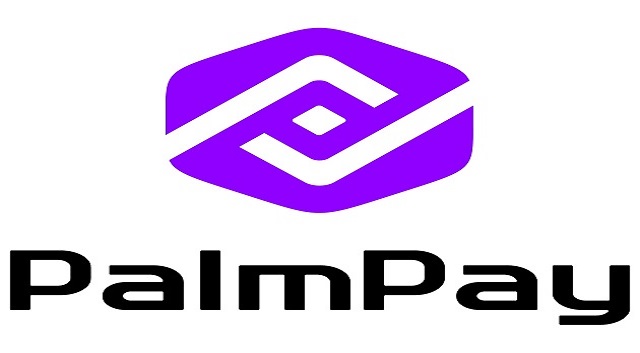News
CSCS Receives A+ Rating of Thomas Murray

The Central Securities Clearing System (CSCS) Plc has been upgraded by Thomas Murray, the global post-trade risk and custody specialists, from A to A+, which denotes a ‘Low’ Overall Risk.
The Overall Assessment of ‘A+’ reflects a weighted average of seven risk components. The assessment for Asset Servicing Risk has been omitted from the Overall Risk assessment since CSCS takes no active part in the entitlement calculation or processing of corporate actions in the market.
The outlook for the CSCS risk assessment is ‘positive’ owing to the fact that there are numerous pending developments scheduled for implementation within the short to medium term. Official time schedules have not been announced in all cases, but it is anticipated that, upon implementation, these developments have the potential to improve the risk assessment of CSCS.
According to the report, one of such developments include the organisation becoming a direct member of the Central Bank of Nigeria (CBN) RTGS system, ensuring that DVP settlement would be realised for both on-exchange and OTC transactions by linking the securities leg and cash leg of settlement.
CBN approval would be required prior to establishing a link meaning that the timeframe for this would be largely dependent on the CBN.
Commenting on the upgrade, Mr. Haruna Jalo-Waziri, Managing Director/Chief Executive Officer of CSCS said: “The upgrade from A to A+ is a significant milestone towards being a globally respected and leading central securities depository in Africa.
The key upgraded areas further indicate that we have made notable improvements in managing our market’s overall risks as we increasingly continue to align ourselves with global best practices. I am extremely proud of the collective efforts made over the years by our committed staff to enable us to make such progress.”
In the same vein, Mr. Jim Micklethwaite, Director, Head of Operations for Thomas Murray said: “Thomas Murray is delighted to announce an upgrade to the overall risk assessment of CSCS. The upgrade across several areas recognises the significant and widespread improvements to processes and controls put in place over the last few years by CSCS, particularly due to the upgraded functionality within its new core system, TCS BaNCS. We will monitor CSCS’ improvements as they continue to adopt international best practices.”
The Central Securities Depository (CSD) risk assessment reviews and assesses the risk exposures for investors associated with the processes the CSD has in place to facilitate the safekeeping and the clearing and settlement of securities, where applicable. It assesses eight key risks (assessment components).
The methodology considers the capabilities of the depository and the quality and effectiveness of its operational infrastructure. It also assesses the depository’s willingness and ability to protect its participants or clients from losses.
As part of the assessment, the scope and quality of the depository’s services is assessed. The assessments are on a consistent global scale, using the familiar AAA to C grading scale. Once the grading is assigned there is an ongoing surveillance process to monitor the depository.
News
How and Why N210 Trillion is Missing in NNPCL – CFO

Adedapo Segun, chief financial officer (CFO), Nigerian National Petroleum Company Limited (NNPC), has explained why there is a missing sum of N210 trillion in the company’s audited financial statement spanning from 2017 to 2023.

According to Segun, the missing funds are cash calls requested by joint venture (JV) partners and settlement to the JVs.
He spokeat a session of the Senate Committee on Public Accounts chaired by Aliyu Wadada.
Segun was responding to an alarm raised by the committee over missing N210 trillion in NNPCL’s audited financial statement.
Recall that Wadada issued a one-week ultimatum to NNPCL to account for the missing N210 trillion.
Reacting, Segun said, “The N103 trillion and N107 trillion are made up of joint venture cash calls that have been requested by the JV operators and JV cash call payments made by NNPCL, which are yet to be reconciled because governance procedures were not done at that time.
“That is why you see the description reflecting those two items would be washed out because they are two sides of the same transaction, which is the cash calls by JV partners and the settlement by NNPCL.”
However, Habu Sadeik, a financial analyst, in a post on X on Thursday, said Segun’s response was unsatisfactory.
Saidik faulted NNPCL’s response about the fund discrepancies, noting that something is not right with the audited financial statement.
“Forget about the senators’ lack of knowledge.
“The CFO’s response is not satisfactory. Are you saying that cash calls worth hundreds of trillions are just appearing on your FS only in 2024 without 31 disclosure?
“If it’s a cash call, why hasn’t the disclosure said so?
“Which cash call is over 100 trillion?
“Something is definitely not right, and I hope they retrospectively correct that FS.
“Someone somewhere did a chef’s work,” he wrote on X.
News
PalmPay, Glo Launch “Recharge and Win Bonanza 2” with Exciting Prizes

PalmPay, Nigeria’s leading fintech company, has partnered with Globacom to launch the second edition of the “Recharge and Win Bonanza” campaign. The promotion, which runs from June 19th to August 8th, 2025, offers Nigerians the chance to win amazing prizes when they purchase Glo airtime and data via the PalmPay app.

According to a joint statement by PalmPay and Globacom, “A weekly live raffle draw will be held and streamed on PalmPay’s official social media channels throughout the campaign. Customers who make Glo transactions through the PalmPay app will be eligible to win prizes, including the iPhone 15 Pro, Infinix Hot 40, and other exciting items”.
To participate, interested customers can log onto http://bit.ly/PalmPaySms .
The statement added that all transaction above N500 gives participants an extra shot at winning, adding that daily social media challenges will also offer participants a chance to win cash prizes.
Additionally, PalmPay users can enjoy up to 6% cashback when they buy Glo airtime and data through the PalmPay app. As an added bonus, customers who have not subscribed to a Glo data plan in the last 90 days will receive a 100% bonus on their recharge during the campaign period.
Wayne Ruppel, Head of Billers at PalmPay Limited expressed excitement about the partnership, stating that, “This collaboration is a major step in our mission to deliver MORE – more support, more rewards, and more innovation to our customers.
Partnering with Glo, a leader in the telecommunications sector, is a testament to our shared commitment to improving everyday experiences for all Nigerians. We are excited to reward our users and encourage everyone to take full advantage of this exciting opportunity.
Globacom also expressed delight at creating additional value for its subscribers through unique customer-appreciation schemes.
“Our partnership with PalmPay on the “Recharge and Win Bonanza perfectly underscores our commitment to delivering exceptional value and experiences. Over the years, we have always sought innovative ways to enrich the lives of our customers. We, therefore, enjoin our subscribers to utilize the opportunity provided by the bonanza and enjoy the many benefits it offers”, the company stated.
PalmPay and Glo will collaborate throughout the campaign period to deliver exceptional customer experience, reward loyalty, and reinforce their shared mission to make digital transactions more accessible, rewarding, and secure for millions of Nigerians.
News
UK Reaffirms 99% Duty-Free Access for Nigerian Exports Under Developing Countries Trading Scheme

United Kingdom has reiterated its long-term commitment to strengthening economic ties with Nigeria, confirming that 99% of Nigerian goods will continue to enjoy duty-free access to the UK market under the Developing Countries Trading Scheme (DCTS).

Dr. Richard Montgomery, British High Commissioner to Nigeria
The announcement reinforces the UK’s intention to bolster sustainable trade with Nigeria, boost export competitiveness, and promote inclusive economic growth across both nations. Introduced in June 2023, the DCTS is designed to reduce tariffs and simplify export rules for developing economies. It currently benefits 37 African countries, with Nigeria being a key player.
Nigerian exporters are set to gain substantial advantages from the scheme, which allows over 3,000 products—ranging from cocoa, plantain, and shrimp to processed items like cocoa paste, palm oil, and cotton garments—to enter the UK duty-free or with reduced tariffs. This shift supports value addition in Nigeria’s export ecosystem, encouraging the move from raw to processed exports.
British High Commissioner to Nigeria, Dr. Richard Montgomery, said: > “Nigeria stands at the heart of the UK’s global trade ambitions. This isn’t just about improved market access—it’s about building a fairer, freer global trading system that supports economic growth and job creation, both in developing countries and in the UK.”
He further noted that through the UK-Nigeria Enhanced Trade and Investment Partnership (ETIP), the UK continues to work closely with the Federal Ministry of Industry, Trade and Investment (FMITI) to tackle export challenges and maximise opportunities under the scheme.
The DCTS aligns with broader UK efforts to expand trade relations across the globe, complementing recent agreements with nations such as India and the United States.

 Telecom3 days ago
Telecom3 days agoALTON Clarifies on Migration to End-User Billing for USSD Services

 E-Financial3 days ago
E-Financial3 days agoNigerian Stock Market Suffers ₦183 Billion Loss Amid Profit-Taking

 News3 days ago
News3 days agoDStv Rewards Loyal Customers with Free Package Upgrades

 Telecom3 days ago
Telecom3 days agoLagos Future Conference 2025: Stakeholders Call for Digital Responsibility and Grassroots Innovation

 News2 days ago
News2 days agoLasaco Assurance to Invest in Technologies, Systems to Deliver Value to Clients

 General News3 days ago
General News3 days agoAfrican Parliamentarians Seek Answers from Telcos on Quality of Service

 E-Financial3 days ago
E-Financial3 days agoSEC Working on Stablecoin Regulation Framework

 News3 days ago
News3 days agoFCCPC Orders Air Peace to Appear Over Alleged Refund Violations




























